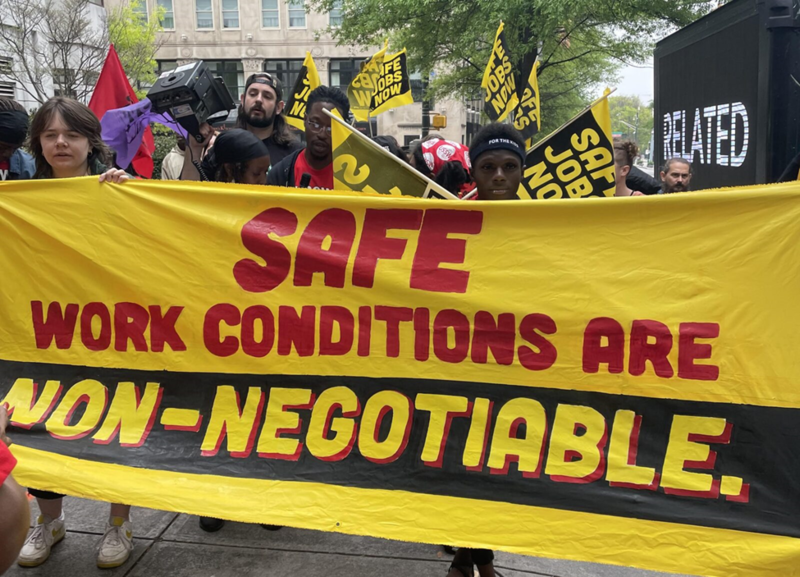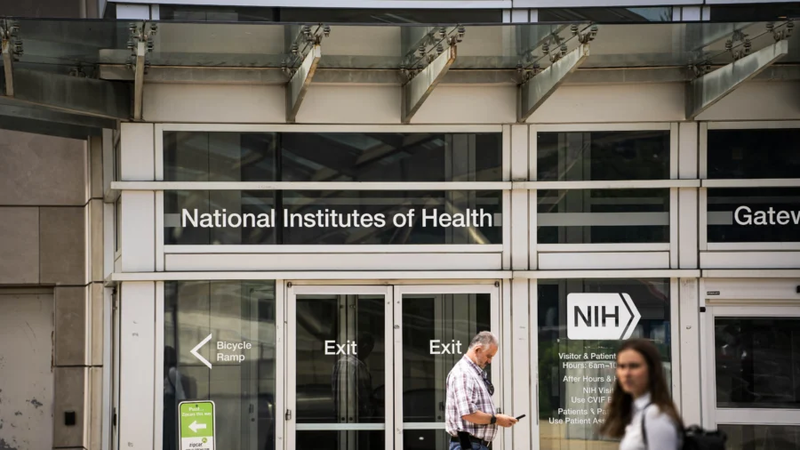CDC Reinstates Fired Employees Amid Challenges to Restructure: A Glimpse into the Complexities of Government Restructuring and Bureaucratic Hurdles
Input
Modified
CDC's U-Turn on Employee Terminations DOGE's Push for NIH Funding Cuts Navigating the Complex Web of the U.S. Political System

CDC's U-Turn on Employee Terminations
Earlier in the year, the CDC made a controversial decision to fire hundreds of its employees, including those involved in key public health functions. The terminations were part of a wider effort to streamline the organization and address certain inefficiencies within the system. However, the move sparked significant backlash from both the public and the employees affected by the decision. Many argued that firing employees who were directly involved in critical tasks, such as fighting disease outbreaks, would hinder the CDC’s ability to respond to emergencies effectively.
Among those dismissed were specialists in epidemiology, disease surveillance, and outbreak control. The CDC’s public health mission requires a workforce that is ready and capable to address sudden health threats, from the COVID-19 pandemic to seasonal influenza outbreaks. These skilled workers are integral to gathering and analyzing data, coordinating with state and local health departments, and offering expert advice on emergency responses.
The backlash led to public outcry, prompting the CDC to reevaluate its decision. In a move that caught many by surprise, the agency reversed course and invited approximately 180 of the terminated employees back to their positions. Some of these individuals had direct involvement in the agency's response to health outbreaks, and their skills were deemed essential in maintaining the CDC’s ability to effectively combat future crises.
While the reversal of terminations might be seen as a victory for public health and the employees affected, it also underscores the challenges that large bureaucratic organizations face when restructuring. Such a decision impacts not just the agency’s workforce, but also the broader public perception of how effectively government agencies manage their resources.

DOGE's Push for NIH Funding Cuts
While the CDC struggles to navigate internal challenges, another contentious issue is brewing in the broader landscape of American health policy. A group called DOGE has been involved in efforts to influence the National Institutes of Health (NIH), pushing for significant funding cuts. The NIH plays a crucial role in advancing scientific research, funding groundbreaking studies, and supporting the development of medical innovations. However, DOGE’s actions signal a growing push to reduce government spending on scientific research, particularly in areas that involve public health.
DOGE’s involvement in the NIH’s financial system has sparked concern among health professionals and researchers who rely on the funding provided by the institution. The NIH is responsible for supporting a vast array of research that leads to advancements in treatments, vaccines, and preventive measures against various diseases. Any attempts to cut funding would have far-reaching consequences for the American healthcare system and global health efforts.
Despite DOGE’s attempts to influence the NIH’s budget, it’s important to recognize the resilience of the organization. The NIH is deeply embedded within the U.S. health infrastructure, and its work has been supported by decades of bipartisan recognition. While DOGE’s efforts may reflect a broader political ideology that seeks to reduce the size of government, the NIH’s standing as a pillar of public health makes it unlikely that these funding cuts will be easily realized.
The NIH is not only a critical institution for medical research but also a symbol of the U.S. commitment to public health and innovation. Cutting its funding would not only limit the country’s ability to address health challenges but would also undermine its position as a leader in global health initiatives. As DOGE continues its push for cuts, the resistance from public health advocates and government officials will likely grow stronger, signaling the difficulty of making such sweeping changes.

Navigating the Complex Web of the U.S. Political System
The CDC and NIH are both examples of institutions that are deeply embedded in the political and bureaucratic structures of the United States. While these organizations are crucial for addressing public health crises and advancing scientific research, their ability to operate effectively is constantly shaped by the political climate and the broader economic landscape.
The U.S. is a democratic nation with a complex system of checks and balances that makes it difficult to implement major changes, particularly when it comes to institutions like the CDC and NIH. This layered system often means that significant policy shifts require approval from multiple levels of government, including the executive, legislative, and judicial branches.
For example, a U.S. judge recently blocked efforts by the Trump administration to cut NIH research funding, demonstrating the power of the judicial branch in safeguarding vital public institutions. This legal intervention highlights the ongoing struggle between different arms of government as they weigh the implications of funding cuts, restructuring efforts, and changes to the national health agenda.
Moreover, the political polarization in the U.S. makes it even more difficult to achieve consensus on critical issues such as public health funding. The tug-of-war between the political parties over the funding of institutions like the NIH reflects the broader tensions within the country about the role of government in healthcare, science, and innovation. Proposals for cuts to funding are met with fierce opposition from public health experts and lawmakers who understand the long-term consequences of reducing resources for health research.
The push to cut funding or restructure agencies like the CDC and NIH is not a simple matter of fiscal policy; it is also a reflection of broader debates about the role of government in society. These debates, while crucial, often slow down the process of reform and can lead to setbacks, as seen with the reinstatement of CDC employees and the ongoing efforts to defund NIH research.
The recent events surrounding the CDC’s firing and subsequent reinstatement of 180 employees, along with the push by DOGE to cut NIH funding, illustrate the ongoing challenges that come with restructuring public institutions in the United States. Government agencies like the CDC and NIH play an essential role in protecting public health, conducting groundbreaking research, and advancing medical science. However, these agencies are constantly buffeted by political winds, budget constraints, and organizational hurdles.
The difficulties faced by the CDC and NIH show just how hard it is to make sweeping changes within the U.S. political system. The complex web of checks and balances, the need for broad political consensus, and the public scrutiny these institutions face all contribute to the slow pace of reform.
As the nation continues to confront pressing public health challenges, including new disease outbreaks, the need for a well-funded and well-managed public health system becomes even clearer. While restructuring efforts may be necessary, they must be approached with caution, ensuring that the institutions charged with protecting the public’s health are not weakened in the process. As seen in the CDC's decision to reinstate its employees, navigating these complexities is never easy, but it is a necessary part of maintaining an effective and responsive government.





















